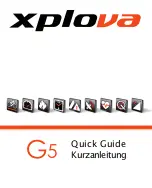
Remote Control Basics
R&S
®
NRPxxTWG
105
User Manual 1178.8371.02 ─ 04
Example:
Setting command:
SENSe:AVERage:COUNt:AUTO ON
Query:
SENSe:AVERage:COUNt:AUTO?
Response:
1
Text parameters
Text parameters observe the syntactic rules for mnemonics, i.e. they can be entered
using a short or long form. Like any parameter, they have to be separated from the
header by a white space. For a query, the short form of the text is provided.
Example:
Setting command:
TRIGger:SLOPe POSitive
Query:
TRIG:SLOP?
Response:
POS
Character strings
Enter strings always in quotation marks (' or ").
Example:
Setting command:
SENSe:FUNCtion "POWer:AVG"
Query:
SENS:FUNC?
Response:
"POWer:AVG"
Block data
Block data is a format which is suitable for the transmission of large amounts of data. A
command using a block data parameter has the following structure:
Example:
SYSTem:HELP:SYNTax:ALL?
Response: #45168xxxxxxxx
The ASCII character # introduces the data block. The next number indicates how many
of the following digits describe the length of the data block. In the example, the 4 fol-
lowing digits indicate the length to be 5168 bytes. The data bytes follow. During the
transmission of these data bytes all end or other control signs are ignored until all
bytes are transmitted.
#0
specifies a data block of indefinite length. The use of the indefinite format requires a
NL^END
message to terminate the data block. This format is useful when the length of
the transmission is not known or if speed or other considerations prevent segmentation
of the data into blocks of definite length.
SCPI Command Structure
















































